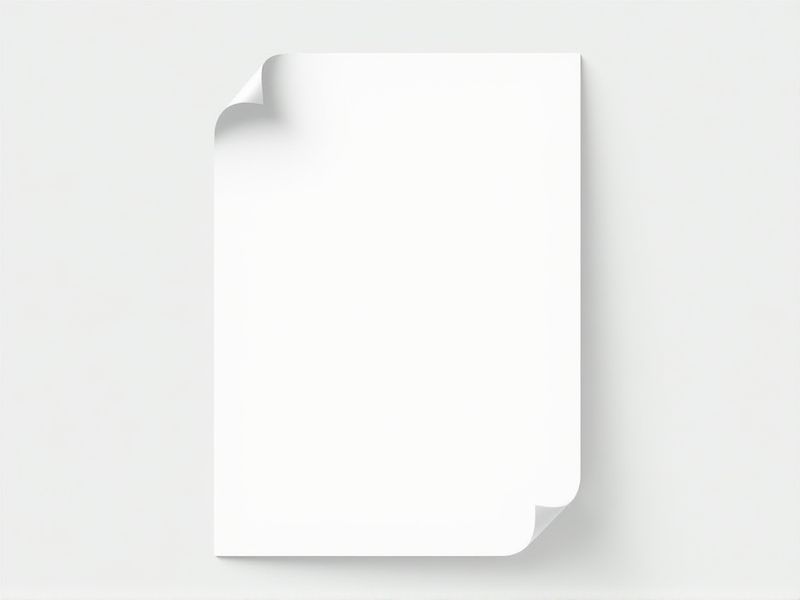
The standard dimensions of letter-size paper are 8.5 inches by 11 inches (21.6 cm by 27.9 cm). This size is commonly used for everyday printing, official documents, and business correspondence in the United States and Canada. When choosing paper for your printer or filing documents, selecting the correct size ensures a professional appearance and compatibility with office equipment. Always double-check these measurements, especially if you are working with international clients, as paper sizes can vary in other countries.
Dimensions: 8.5X11 Inches
Letter-size paper is primarily defined by its dimensions of 8.5 inches in width and 11 inches in height, making it a popular choice for various printing needs. This standard size is widely utilized in the United States and Canada, ideal for documents, reports, and letters. The area of letter-size paper approximates 93.5 square inches, providing sufficient space for text and graphics. When selecting paper for your projects, always consider the impact of these dimensions on print layout and readability.
Known As Us Letter Size
The US Letter size paper measures 8.5 inches by 11 inches, making it a widely recognized standard in North America. This paper format is commonly used for printing documents, reports, and letters due to its convenient dimensions for both office and home use. The aspect ratio of 1:1.29 allows for effective layout of text and images, appealing for professional presentations. In educational settings, you'll find that this size is often preferred for homework assignments and handouts, reinforcing its utility across various fields.
Used Widely In The Usa
Letter-size paper, measuring 8.5 x 11 inches, is the standard paper size predominantly used in the United States. This format is commonly utilized for printing documents, reports, and letters in both personal and professional settings. In educational institutions, it's the preferred choice for notebooks and assignments, accommodating a wide range of printing needs. Its prevalence makes it essential for anyone looking to maintain consistency in their document presentations across various platforms.
Basis Weight Usually 20 Lb
Letter-size paper, commonly utilized in offices, typically adheres to a standard basis weight of 20 lb, which denotes the weight of a ream of 500 sheets cut to 17 x 22 inches. This weight is ideal for everyday printing, allowing for crisp text and vibrant images while maintaining a professional quality. In contrast, heavier options, like 24 lb paper, provide added durability for important documents and presentations. When choosing paper for your needs, considering the basis weight is crucial for achieving the desired print quality and feel.
One Of The Iso 216 Standard Sizes
A4 paper, measuring 210 mm by 297 mm, is a prominent size in the ISO 216 standard, widely adopted across Europe and many other regions. This format is ideal for various uses, including printing documents, stationery, and letterheads, offering a perfect balance of space and usability. When utilizing A4 for printing, you can ensure compatibility with most printers and copiers, as this size is universally recognized in both consumer and commercial environments. By choosing A4, you gain access to a versatile paper size that meets the demands of everyday communication and presentations.
Common For Business Documents
The standard letter-size paper measures 8.5 by 11 inches, making it the most commonly used format for business documents in the United States and Canada. This size is ideal for printed materials such as resumes, letters, and reports, providing ample space for text without compromising readability. When using letter-size paper, you effectively align with industry norms, facilitating seamless communication and professionalism in your presentations. Utilizing this standard size can enhance your document's impact, making it more accessible and familiar to your audience.
Suitable For Printing And Copying
The standard letter-size paper measures 8.5 x 11 inches, making it ideal for various printing and copying tasks. This versatile paper accommodates most documents, including resumes, reports, and letters, ensuring compatibility with most printers and copiers. Typically, letter-size paper comes in weights ranging from 20 to 24 pounds, striking the right balance between thickness and flexibility for high-quality output. When selecting paper, consider acid-free options to enhance durability and prevent yellowing over time.
Frequently Used For Resumes
Letter-size paper, measuring 8.5 x 11 inches, is the industry standard commonly used for resumes in the United States and Canada. This size allows you to present your professional information clearly and concisely, ensuring it fits easily into standard envelope sizes. The preference for letter-size paper for resumes enhances readability, with margins typically set to one inch on all sides to create a balanced layout. Adhering to this format increases your chances of catching the eye of potential employers.
Often Used In Academic Settings
Letter-size paper measures 8.5 x 11 inches, a dimension frequently utilized in academic settings for assignments and reports. This paper size is ideal for printing and copying, ensuring compatibility with most printers and educational materials in the United States and Canada. You can find letter-size paper in various weights, typically ranging from 20 lb to 32 lb, affecting the thickness and sturdiness well-suited for different purposes. In addition to its widespread use in schools, letter-size paper is also favored for official documents, resumes, and legal correspondence.
Compatible With Most Printers
Letter-size paper measures 8.5 x 11 inches, making it compatible with the majority of printers in both home and office settings. This size is preferred for a variety of documents, including resumes, reports, and correspondence, ensuring versatility for users. Most standard inkjet and laser printers are designed to accommodate letter-size paper without any adjustments, streamlining your printing tasks. Choosing this standard size can enhance your productivity, allowing you to print high-quality materials efficiently.
